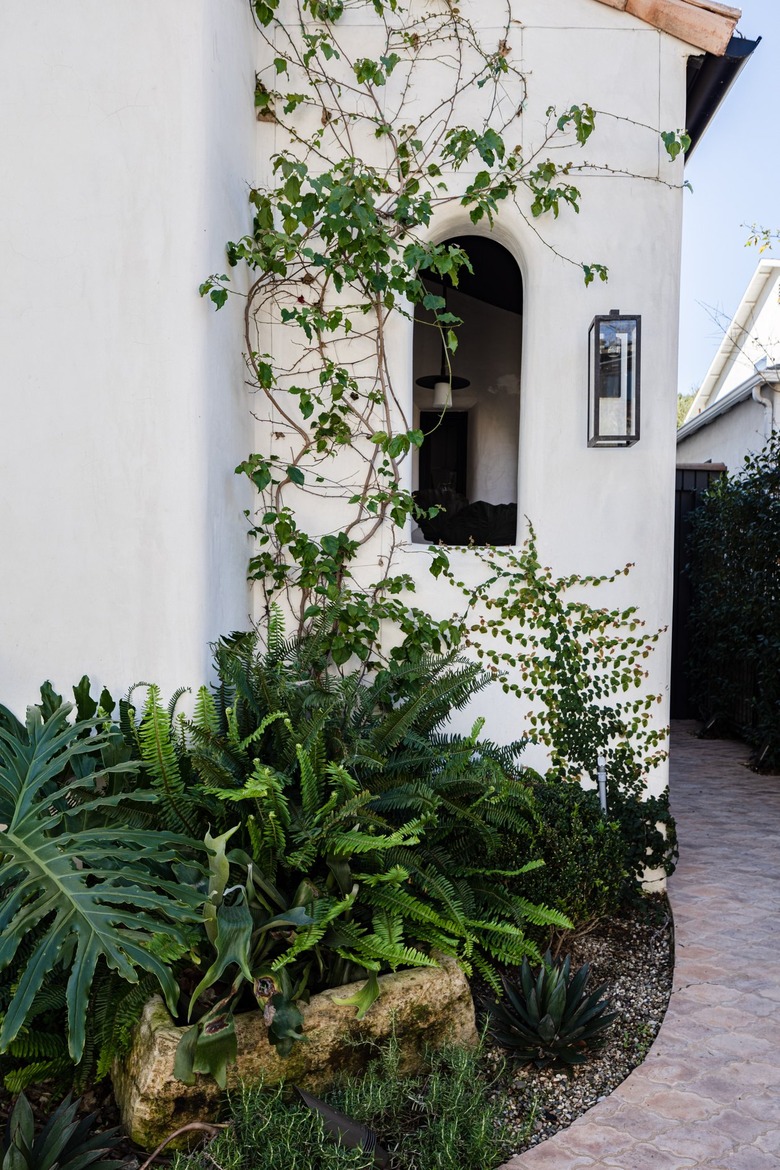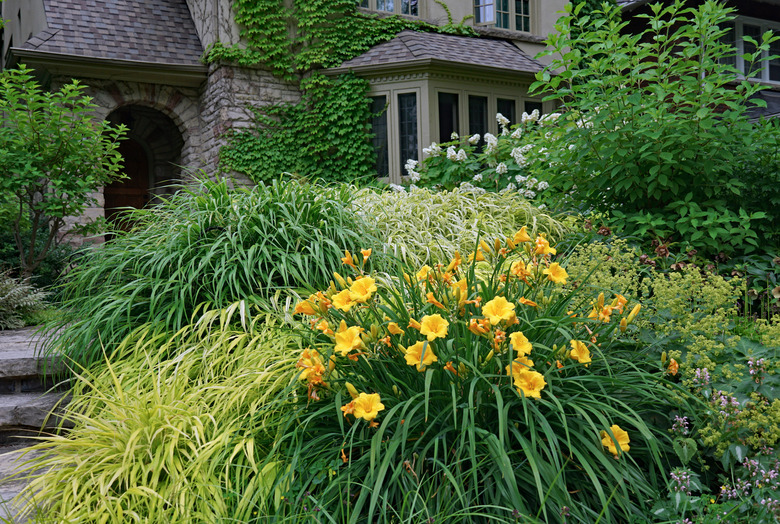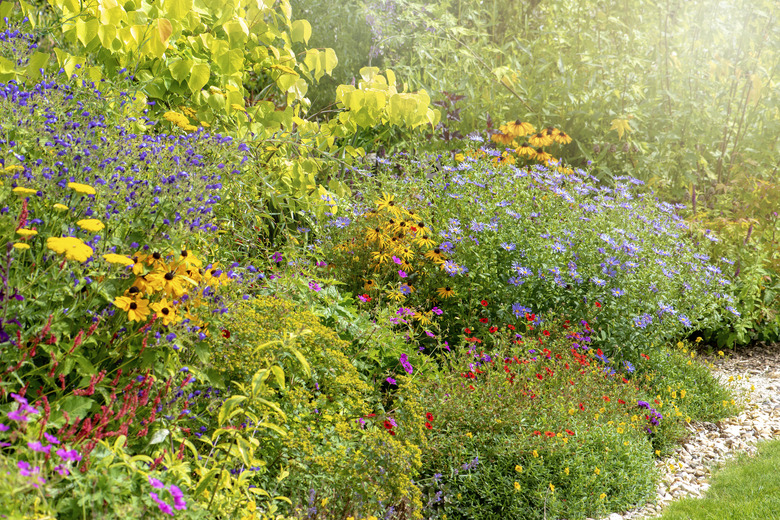How To Choose Water-Wise Plants
You don't need to live in the desert to benefit from choosing water-wise plants. They use less water in the garden, and water-wise or drought-tolerant plants can withstand prolonged dry spells better than most other plants. Though succulents are en vogue right now, your choices extend well beyond cacti or other desert plants.
Even homeowners who live in areas with ample rainfall can use water-wise plants in problem spots around the yard. Some planted areas tend to dry out quicker than others, such as a slope that is in full sun all day or a bed near a masonry driveway or patio where water evaporates quickly. Water-wise plants are ideal for spots in the yard that are difficult to reach when watering.
Native Water-Wise Plants
Native Water-Wise Plants
Plant species that are native to your area are good starting points when selecting water-wise plants. Indigenous plants have evolved to adapt to local conditions, such as soil types, rainfall amounts, temperatures, winds and the like. If you live in a naturally dry area, then some native plants can thrive.
Your local garden center or a local nursery may stock some native plants, or you can get plant lists by contacting your county extension office of the Cooperative Extension System, which is a United States Department of Agriculture (USDA) program that works with local governments and universities to provide information on gardening to the public. Also, there are local organizations devoted to native plants. The U.S. Environmental Protection Agency has compiled a list of sources.
If you live in an area that is not particularly dry but local conditions call for drought-tolerant plants, you can select appropriate plants from other areas.
Choosing Water-Wise Plants
Choosing Water-Wise Plants
The USDA plant hardiness zone map divides the U.S. and Canada into 13 zones based on their average minimum winter temperatures. Newer maps divide each zone into two. The map helps you decide which plants will survive in your garden. You'll find a plant's ideal range of zones in plant catalogs.
While hardiness zone information is a standard climate reference, your garden may have microclimates that can affect a plant's health. For example, a building or a clump of densely planted shrubs that blocks or redirects the wind can alter the growing conditions in adjacent areas.
Other conditions that can affect your decision are areas that are normally dry but do flood periodically, such as rain gardens. Rain gardens are low areas that manage rainfall runoff from the house and masonry surfaces. Some drought-tolerant plants such as daylilies (Hemerocallis spp.) can withstand occasional flooding.
Many water-wise plants have lacy leaves because the small surface area reduces evaporation. Others have thick, waxy leaves that can hold moisture, such as succulents.
Roots of water-wise plants tend to grow deep into the soil to reach moisture. For that reason, drought-tolerant plants thrive in fine, well-draining soil, so consider adding organic matter to loosen the soil. The organic matter will also supply nutrients and help hold moisture in the soil. Because they do well in dry conditions, most water-wise plants do best in full sun.
If you're having trouble finding specific plants, many wholesale growers who distribute through garden centers have extensive online catalogs. They can also help you find a retailer who carries their plants.
Caring for Water-Wise Plants
Caring for Water-Wise Plants
Even the most hardy, drought-tolerant plants need some watering, especially when first planted. As the plant becomes established and starts to grow, decrease supplemental watering. Don't overwater because some plants do not do well in damp, poorly draining soil.
For efficient watering of any garden plants, use a soaker hose or a drip irrigation system rather than a handheld hose or sprinklers. Soaker hoses and drip systems deliver water right to the base of the plant, mitigating water loss through evaporation.
Applying 2 to 3 inches of organic mulch to the planting bed will suppress weeds and help keep moisture from evaporating from the soil. Apply mulch, such as wood chips, straw or compost annually. Do not mound it around the base of plants. Don't use gravel or shell mulches because they absorb and reflect heat, harming nearby plants.
10 Water-Wise Perennials
10 Water-Wise Perennials
- Autumn Joy Sedum (Hylotelephium 'Herbstfreude' AUTUMN JOY, zones 3 through 10): This rugged succulent produces large, flat, pink flowers that turn russet red in the fall. Clip spent flowers to produce new blooms. Autumn Joy reaches 18 to 24 inches tall and wide. The plant can stand partial shade to full sun. Plant in well-draining soil and water regularly until the roots are established.
- Stella de Oro Daylily (Hemerocallis x 'Stella de Oro,' zones 3 through 10): Daylilies are among the easiest plants to grow. This cultivar produces bright-yellow flowers on stems that reach 30 inches tall among lush green foliage. They are best when planted in clumps for visual effect. It thrives in loamy soil that is rich with organic matter but can survive in most any soil. Reduce regular watering once the plant is established.
- Red Filli Crape Myrtle (Lagerstroemia indica 'Red Filli,' zones 4 through 9): Most crape myrtles are not cold hardy, but this hybrid can be planted as far north as zone 4. This dwarf tree/shrub will only reach 2 to 3 feet high and wide and produces red blooms from spring to fall. Water them regularly to establish roots. Once established, water only when the top 4 or 5 inches of soil is dry.
- Pink Rugosa Rose (Rosa rugosa, zones 2 through 7): This shrub rose will grow 3 to 8 feet tall and wide. When planted in groups, the shrub forms a barrier of dense branches with little care on your part. The plant likes full sun and well-draining soil. Water until the roots are established and then reduce frequency. In addition to resisting drought, it also resists wind and salt air, making it a good choice for coastal areas.
- Angelina Stonecrop (Sedum rupestre 'Angelina,' zones 5 through 8): This succulent ground cover is a great choice for dry slopes or flowering borders. The greenish-yellow needles last all summer, and in the fall, the foliage turns orange in colder climates. Plant in partial to full sun. The plant does well in lean soils (not much organic matter). The plants grow 3 to 6 inches tall and 2 to 3 feet wide. Water occasionally once established.
- Elijah Blue Fescue (Festuca glauca 'Elijah Blue,' zones 4 through 8): This ornamental grass forms dense mounds that are 8 to 12 inches tall and wide. Elijah Blue needs full sun and can thrive in less-than-perfect soils as long as the soil drains well. Soggy soil stresses the plant. Once the roots are established, reduce watering frequency. In addition to being drought-resistant, deer tend to leave the plant alone.
- Blue Jean Baby Russian Sage (Perovskia atriplicifolia 'Blue Jean Baby,' zones 4 through 9): The lavender-blue flowers of this plant last into the fall. At 30 to 36 inches tall and wide, Blue Jean Baby is shorter than other sages, but it is better at resisting the tendency to flop over. It does well in less-than-perfect soil, but avoid planting in soggy soil that does not drain well. Water regularly to establish the root system and then water occasionally.
- Yellow Trumpet Vine (Campsis radicans 'Flava,' zones 4 through 9): This self-clinging vine can grow up to 40 feet if properly supported by a trellis or fence. It needs full sun and well-draining soil, but once established, it will grow and produce yellow flowers with minimal attention. Water regularly when first planted, but after that, dry soil helps stimulate blooms.
- Black-Eyed Susan (Rudbeckia fulgida var. sullivantii 'Goldsturm,' zones 3 through 9): This popular border plant produces daisy-like yellow and black flowers from midsummer into fall. Goldsturm is a quick grower, reaching 24 to 36 inches when mature. It prefers well-draining soil, but it can do well in clay soil. Water well to establish the root system, and it easily tolerates dry conditions after it is established.
- Phenomenal Lavender (Lavandula x intermedia 'Niko' PHENOMENAL, zones 4 through 8): Most lavenders do not do well in areas below zone 5, but this hybrid's reach can extend into zone 4. Plant in a dry, hot space, even one where nothing has grown before. They thrive in poor, gravelly soil. This plant has low watering needs. Phenomenal lavender plants are unusually large, reaching over 4 feet wide and 2 to 3 feet high.


